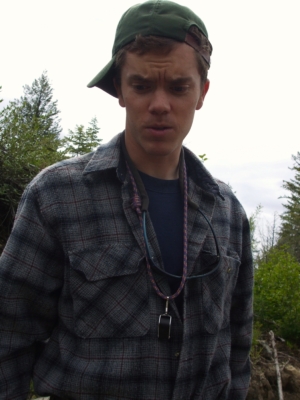Biography:
Joel is currently working on his Ph.D. thesis at the University of Calgary under the supervision of Dr. David Pattison, and as part of the Targeted Geoscience Initiative-3 (TGI-3) in southern British Columbia. He received a bachelor’s degree in geology from Middlebury College (Vermont, USA) in 2005, with an honors thesis focused on bedrock mapping and trace element geochemistry in coastal Maine. Following graduation, Joel worked mapping hot springs and geysers for the National Park Service in Yellowstone, followed by a stint with the National Science Foundation in Antarctica. The latter project, SHALDRIL, conducted shallow drilling on the Antarctic continental shelf to gain information on past climate fluctuations. He began at the University of Calgary in the fall of 2006, and has been working in the Christina Lake, BC, area for the past three years.
Project:
The Grand Forks Complex is a fault-bounded metamorphic core complex situated in the Omineca Crystalline Belt, southeastern British Columbia. My project aims to analyze the structure and petrology of the area, focusing on constraining the polyphase metamorphic and exhumation history. Investigations include detailed metamorphic characterization of the lithologies immediately juxtaposed across the bounding Granby (GF) and Kettle River (KRF) normal faults, with the aim of accurately constraining the amount of displacement on those faults in order to reevaluate the importance of Eocene normal faulting in overall orogenic collapse. Preliminary data suggests a major isothermal decompression event in the Late Cretaceous — Paleocene, prior to late brittle faulting, and field relationships should lend insight into the possible mechanisms for this exhumation, be it rolling hinge extension, vertical tectonics, thrusting or otherwise.
Metamorphic investigations within the hanging-wall to the KRF seek to delineate the extent of contact aureole zones around the Jurassic Nelson intrusive suite and better understand the nature of its emplacement. Detailed mapping in these contact aureoles will help further area-specific deposit models for carbonate replacement/skarn Pb-Zn-Fe showings, and better evaluate those systems for their economic potential. Similar normal faults in the Cordillera have been linked to hydrothermal fluid flow and Ag-Pb-Zn-Au mineralization (e.g. the Slocan Lake Fault; Beaudoin 1992), but this potential has not been explored along the KRF. Examining this association will help decipher whether fault-controlled mineralization found to the north is a local phenomenon or can be extrapolated to other extensional systems within the Cordillera.
